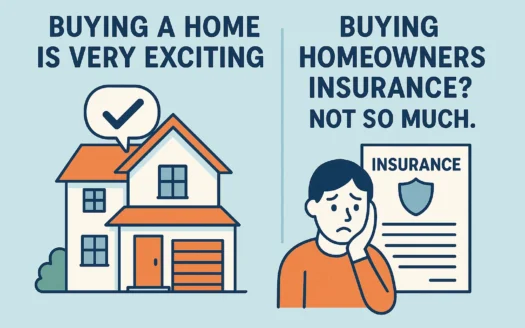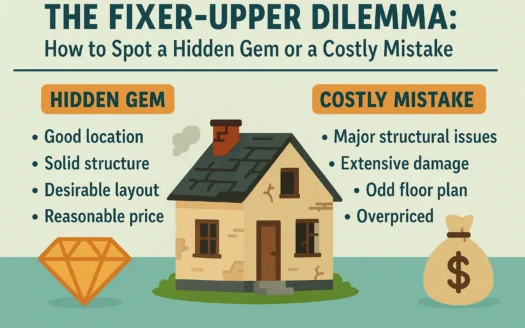Make Sure You Have the Right Insurance for Your New Home

Make Sure You Have the Right Insurance for Your New Home
Many people spend months or even years shopping for a home, yet leave the decision about homeowners’ insurance—critical for protecting their investment—until just before closing. One word about that: Don’t. Homeowners’ insurance policies may have standard inclusions, but they’re far from generic. The time to discover gaps in coverage isn’t after a fire, theft, or other costly disaster. Start early and research thoroughly.
Key Considerations for Homeowners Insurance
Know What Is Covered
If your home or belongings are damaged or destroyed, most policies cover replacement cost, which estimates the expense to repair, rebuild, or replace items. This figure isn’t tied to the home’s purchase price, appraised value, or tax assessment. Insurance companies use proprietary formulas to calculate replacement costs, factoring in details like the number of bedrooms and bathrooms, along with current construction data.
Standard policies also typically include:
- Liability protection for accidents on your property (e.g., slip-and-fall injuries).
- Additional living expenses if you’re temporarily displaced due to covered events (e.g., fire).
Covered perils often include fire, theft, hail, and lightning. Always review your policy’s specifics.
Know What Is Not Covered
Standard policies usually exclude:
- Floods
- Sewer backups
- Earthquakes
Separate coverage may be required for these risks, especially in high-risk areas. Mortgage lenders often mandate flood insurance in flood zones. Hurricanes fall into a unique category, with deductibles often calculated as a percentage of the insured value (up to 5%), leaving homeowners responsible for significant out-of-pocket costs.
Additional tips:
- Home-based businesses may require separate coverage for equipment.
- High-value items (e.g., jewelry, antiques) often need supplemental policies like floaters or riders.
- Maintain an updated inventory of possessions to streamline claims.
Factors Affecting Insurance Costs
Several elements influence premiums:
- Construction type: Brick homes often cost less to insure than wood-frame structures.
- Fire protection: Proximity to hydrants and fire department quality.
- Safety features: Discounts for smoke detectors, burglar alarms, or fire sprinklers.
- Risk factors: Swimming pools, trampolines, wood stoves, or certain dog breeds may raise rates.
Newly built homes might qualify for discounts due to modern materials and building codes that enhance durability against wind, fire, and other hazards.
Understanding Deductibles
Deductibles determine your out-of-pocket expense before insurance coverage begins. Options include:
- Dollar deductibles: Fixed amounts (e.g., $500 or $1,000).
- Percentage deductibles: Based on the home’s insured value (e.g., 2% of $100,000 = $2,000).
Higher deductibles generally lower premiums, but ensure you can afford the upfront cost in a crisis.
Special Considerations for Condo Owners
If buying a condo:
- Verify the condo association’s insurance covers common areas and liability.
- Purchase personal coverage for your unit and belongings.
Final Tips
- Compare policies: Don’t choose based solely on price. Coverage details matter.
- Ask questions: Reputable insurers will thoroughly assess your needs.
- Review regularly: Update coverage as home values and possessions change.
Homeowners insurance is not a one-size-fits-all product. Invest time in understanding your policy, exploring discounts, and ensuring adequate protection for your most valuable asset.




